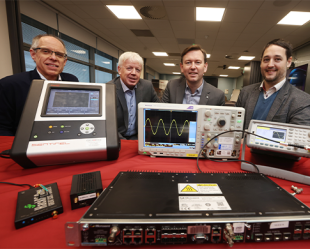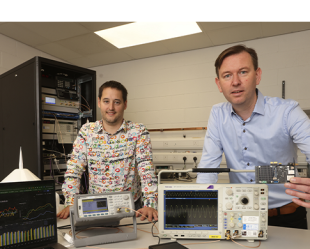Tuesday, August 15th, 2017
The National Standards Authority of Ireland (NSAI) has today announced the publication of the revised Reactive Pyrite Standard, I.S. 398-1, which is used by engineers, geologists and other technical experts, when assessing buildings where the materials under the ground floor are affected by pyrite.
The new version is intended to make it easier to categorise pyrite-affected properties, including more than 12,000 homes. The four building categories A, B, C, and D have been redefined and now examine the susceptibility to expansion of the aggregate materials under the ground floor slab, or ‘hardcore’.
This Irish standard was updated and revised to reflect the on-site experiences and evidence gathered by technical experts who have been using the standard over the past four years.
“As anyone who has been affected by pyrite will know, unfortunately pyrite is unpredictable. NSAI’s Reactive Pyrite Technical Committee revised this standard to further reduce the possibility of ambiguity in deciding and interpreting results, and give more clarity to the categorisation process,” said NSAI Chief Executive, Geraldine Larkin.
“I want to thank the committee members and the members of the public for their important contributions to the revision. We received over 200 comments during the public consultation period, including many submissions from homeowners,” she added.
The update to I.S. 398-1, which was first published in 2013, follows consultation with members of the public and input from NSAI’s Reactive Pyrite Technical Committee, which is made up of engineers, geologists, academics and other technical experts. NSAI’s consultative process facilitated inputs and co-ordinated the development of the standard.
The public consultation period ran from October 13th to December 17th last year, when the 200 comments were received. Approximately a quarter of these submissions related to the pyrite remediation scheme and the rest to the technical requirements of the standard. All comments related to the Pyrite Remediation Scheme will be passed onto the Pyrite Resolution Board.
The Pyrite Remediation Scheme currently references I.S. 398-1:2013 when assessing buildings damaged by pyrite. The Pyrite Resolution Board, with the support of the Housing Agency, is responsible for the implementation of the pyrite remediation scheme.
Changes to I.S. 398-1:2013
The following major changes have been made to this 2017 version of I.S. 398-1 Reactive pyrite in sub-floor hardcore material – Part 1: Testing and categorisation protocol:
- Building categories A, B, C, and D have been redefined in terms of the extent of susceptibility to expansion of the hardcore (previously, the magnitude of expansion of the hardcore) and the potential of future damage to the building from pyritic heave. References to “red”, “amber” and “green” as originally referred to in the Report of the Pyrite Panel (2012) have been removed.
- Where possible, definitive conclusions are provided in terms of confirming if the hardcore has a negligible risk of causing pyritic damage to the building in the future (Category A), that it will only incur minor damage to the building in the future (Category B), or that it has already caused significant pyritic damage or progressive damage to the building (Category D).
- The potential future damage of buildings assigned Category B, which were previously “amber”, is now deemed limited to minor damage and minor damage is now defined as damage easily treated using periodic repairs e.g. cracks easily filled, repointing of external masonry etc.
- With a "minor damage" designation, it is not envisaged that the hardcore in buildings assigned Category B would need to be replaced, however such definitive outcomes are still not possible for buildings assigned Category C, due to a number of inconsistencies or variability in hardcore material.
- In terms of susceptibility of the hardcore to expansion, the classification designations of the hardcore samples are revised as follows:
| I.S. 398-1:2013 classifications | I.S. 398-1:2017 classifications |
| Pass – not susceptible to expansion | Negligible susceptibility to expansion (pass) |
| Inconclusive – susceptible to limited expansion | Low susceptibility to expansion |
| Medium susceptibility to expansion | |
| Fail – susceptible to significant expansion | Significant susceptibility to expansion (fail) |
As a result of these changes, the term "Inconclusive" is no longer applicable to the classification of the hardcore.
Other changes to the I.S. 398-1 standard include:
- The size requirement of the sampling hole through the concrete floor has been increased from four to six intersecting 200 mm diameter core holes to facilitate penetration of the full-depth of the hardcore to natural ground.
- The laboratory Test Suites 1 and 2 for analysing the sample of hardcore have been amalgamated as Test Suite 1. Particle Size Distribution (PSD) has been added, geological inspection (retitled simplified petrographic description) and chemical testing have been removed from Test Suite 1 (since they are performed under Test Suite 0). There is now an option for the Professional Geologist/Chartered Geotechnical Engineer to assess and direct the need for additional testing, after completion of Test Suit 0 and Test Suite 1 to aid classification of the hardcore in terms of future risk of pyrite-induced expansion. The criteria for interpretation of the hardcore test results have been revised.
- A new informative annex has been added as guidance for the Professional Geologist/Chartered Geotechnical Engineer for interpretation of the chemical and petrological results to assist with classification of the hardcore sample.
- The criteria for the evaluation of visual damage assessment have been revised. As a result, there is an increase in the number and type of attributes evaluated for damage during the assessment to provide more comprehensive and reliable criteria for assessing pyrite-induced damage in buildings.
- The Certificate of building categorisation for reactive pyrite in sub-floor hardcore material has been revised to include a signature of the Professional Geologist/Chartered Geotechnical Engineer and to take into account other relevant revisions made to the document.



